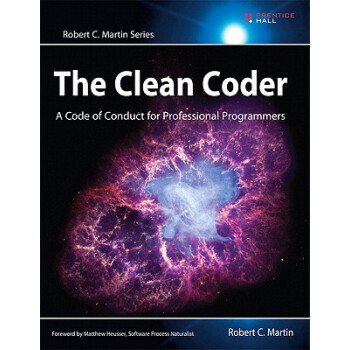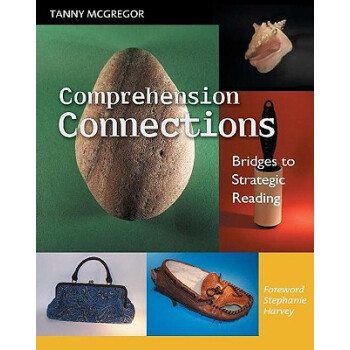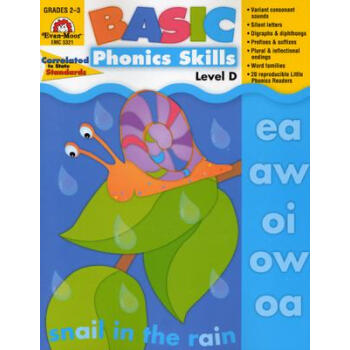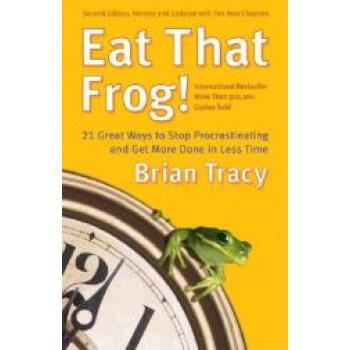![How To Control Your Anxiety Before It Controls You [平装]](https://pic.windowsfront.com/19635342/57833297Nd74e5716.jpg)

具体描述
内容简介
“No individual—not even Freud himself—has had a greater impact on modern psychotherapy.” --Psychology TodayCLASSIC SELF-HELP FROM A RESPECTED PIONEER OF PSYCHOTHERAPY
?
From social anxiety to phobias to post-traumatic stress disorder, sources of anxiety in daily life are numerous, and can have a powerful impact on your future. By following the rules of Rational Emotive Behavior Therapy (REBT), created by world renowned therapist Dr. Albert Ellis, you can stop anxiety in its tracks if you will admit this important fact: Things and people do not make you anxious. You do. Your unrealistic expectations produce your needless anxiety. Yet not all anxiety is needless…
?
Healthy anxiety can ward off dangers and make you aware of negative things that you can change. Unhealthy anxiety inhibits you from enjoying everyday activities and relationships, causes you to perform poorly, and blocks your creativity. Using the easy-to-master, proven precepts of REBT, this classic book not only helps you distinguish between healthy and unhealthy anxiety, but teaches you how to:
?
•Understand and dispute the irrational beliefs that make you anxious
•Use a variety of exercises, including rational coping self-statements, reframing, problem-solving methods, and Unconditional Self-Acceptance (USA), to control your anxiety
•Apply over 200 maxims to control your anxious thinking as well as your bodily reactions to anxiety
?
…and much more, including examples from dozens of cases Dr. Ellis treated successfully. Now you can overcome the crippling effects of anxiety—and increase your prospects for success, pleasure, and happiness at home and in the workplace.
作者简介
Albert Ellis, Ph.D. founded Rational Emotive Behavior Therapy (REBT), the pioneering form of the modern Cognitive Behavior therapies. In a 1982 professional survey, Dr. Ellis was ranked as the second most influential psychotherapist in history. His name is a staple among psychologists, students, and historians around the world. He published over seven hundred articles and more than sixty books on psychotherapy, marital and family therapy, and sex therapy. Until his death in 2007, Dr. Ellis served as President Emeritus of the Albert Ellis Institute in New York, which provides professional training programs and psychotherapy to individuals, families and groups. To learn more, visit www.albertellis.org.?
Kristene?A.?Doyle,?Ph.D.,?Sc.D.?is?the?Director?of?the?Albert?Ellis?Institute.?Dr.?Doyle is also the Director of Clinical Services, founding Director of the Eating Disorders Treatment and Research Center, and a licensed psychologist at the Institute. She is a Diplomate in Rational-Emotive and Cognitive-Behavior Therapy and serves on the Diplomate Board. In addition, Dr. Doyle conducts numerous workshops and professional trainings throughout the world and has influenced the growth and practice of Rational Emotive and Cognitive Behavior Therapy in countries spanning several continents. Dr. Doyle is co-author of A Practitioner’s Guide to Rational Emotive Behavior Therapy, 3rd edition, and co-editor of The Journal of Rational-Emotive and Cognitive-Behavior Therapy. She has served as an expert commentator for ABC’s 20/20, Access Hollywood, Channel 2 and Channel 11 News. Dr. Doyle has also been quoted in prestigious publications including The New York Times, U.S. News and World Report, and The Wall Street Journal.,,,
用户评价
坦白说,刚开始翻开这本书时,我还有点怀疑,市场上类似的自助书籍太多了,大多都是雷声大雨点小。但这本书的深度和细致程度,完全超出了我的预期。它最吸引我的地方在于,它深入探讨了“回避行为”的恶性循环。我意识到自己过去几十年里,为了躲避一点点不适感,建立了一个巨大的“安全区”,而这个安全区反而成了我进步的最大障碍。作者没有指责我们,而是耐心地揭示了回避行为的短期收益(暂时的放松)和长期代价(恐惧的固化和生活范围的缩小)。书中关于“接受不确定性”的那几章,简直是哲学课级别的探讨。我们总想找到一个万无一失的保证,但生活本身就是一场巨大的概率游戏。作者引导我们去思考,是不是“确定性”本身就是一种幻觉?接受“我不知道未来会怎样,但我可以应对任何发生的情况”,这种心态的转变,比任何技巧都来得更根本和持久。它把对焦虑的控制,从一个战术层面的应对,提升到了一个战略层面的生活哲学重塑。读完后,我感觉自己对生活的掌控感,不再是建立在外部环境稳定不变的基础上,而是建立在我内在的适应性和韧性之上。
评分这本书的语言风格有一种独特的、近乎于幽默的冷静,让人在面对那些令人心悸的话题时,反而能保持一种清醒的疏离感。它避免了那种过度煽情或故作高深的笔调,而是用一种非常务实、甚至带点科学分析的口吻,来解剖焦虑的运作机制。特别是它对“完美主义”和“自我批评”这两种“焦虑孪生兄弟”的分析,简直是精准到让人冒冷汗。我一直以为我的高标准是上进心的体现,但书中明确指出,过度的完美主义往往是害怕被评判、害怕失败的另一种伪装。作者提供的方法论是,将任务“降级”到一个“足够好”的水平,先完成,再迭代。这种对“完成度”的重新定义,极大地减轻了我启动任何项目时的心理负担。我尝试用这种方法处理了一份拖延已久的工作报告,结果发现,一旦我允许自己写出“不完美的第一稿”,思路反而流畅了,最终成品也比我预想的要好得多。这本书不是让你成为一个无所畏惧的超人,而是让你成为一个更聪明、更懂得自我宽恕的普通人,这种贴近人性的视角,是它区别于其他书籍的关键所在。
评分如果你问我这本书最核心的收获是什么,我会说是它关于“锚定当下”的训练。我们的大脑就像一个永不停歇的钟摆,要么被拽向对过去的懊悔,要么被甩向对未来的担忧。这本书提供了一整套工具,教你如何用“此刻的感官输入”来拉回那个失控的钟摆。书中详细介绍了多种“正念技巧”,但它强调的不是那种盘腿冥想的固定姿势,而是如何将正念融入到日常的每一个微小瞬间——比如洗碗时的水温触感、走路时脚底与地面的接触感、认真品尝一口咖啡的味道。我开始有意识地练习“五感着陆法”,效果惊人。以前我喝咖啡就是为了提神,现在我把注意力完全放在那微酸的苦涩和温热的液体滑过喉咙的感觉上,那一刻,过去的焦虑和未来的计划似乎都暂时退居二线。这种对“当下”的专注,极大地削弱了焦虑情绪的能量来源,因为焦虑的本质是对“不存在”的事情的过度反应。这本书教会了我,真正的力量不是来自对未来的预测,而是来自对此刻的全然体验。它让我从一个时间维度的囚徒,变成了一个空间维度的居住者。
评分这本书简直是为我量身定做的!我一直都觉得自己被那些突如其来的恐慌和无休止的担忧牵着鼻子走,生活质量直线下降。读完第一遍的时候,我简直像发现了新大陆,里面关于如何识别“思维陷阱”的那一章,简直是醍醐灌顶。我以前总觉得那些负面想法是“事实”,是无法改变的既定程序,但作者用非常日常的语言和生动的例子,把这些想法解构得一清二楚。比如,书中提到的“灾难化思维”,我以前就是重灾区,任何小问题都会被我放大成世界末日。作者提供的那套“提问式挑战法”,要求你像个侦探一样审视自己的每一个恐惧,这招真的太管用了。我开始尝试在焦虑袭来时,不是立刻沉溺其中,而是问自己:“这个想法有百分之百的证据支持吗?”“最坏的结果真的会发生吗?如果发生了,我能应对吗?”这种逐步抽离和理性介入的过程,虽然初期需要极大的意志力,但效果是立竿见影的。它不是那种空洞的“积极思考”口号,而是给出了一套系统化的、可以立刻上手的工具箱。我最欣赏的是,它承认焦虑的合理性,而不是一味地打压,而是教你如何与这个“不速之客”和平共处,最终掌握主动权。这本书让我明白,控制焦虑不是要消灭它,而是要学会与它共舞,决定谁才是舞台的主角。
评分我必须说,这本书的叙事节奏把握得非常好,完全不像某些心理自助书籍那样枯燥乏味,读起来更像是在和一个经验丰富、但又超级接地气的朋友聊天。作者在讲解复杂的认知行为疗法(CBT)概念时,运用了大量生活化的比喻,让那些原本高深莫测的心理学名词变得平易近人。举个例子,书中关于“暴露疗法”的部分,它不是简单地让你去“面对恐惧”,而是循序渐进地设计了一个“焦虑阶梯”。我以前总是想一步登天,直接去挑战最大的恐惧,结果往往是失败告终,加深了无助感。这本书教我如何将一个大恐惧分解成十个小步骤,每完成一步就给自己一个肯定的信号,这种累积的成功经验,才是真正建立自信的关键。更让我感到惊喜的是,它对身体反应的关注。我以前只关注脑子里的声音,却忽略了那些偷偷摸摸爬上来的生理信号,比如心跳加速、呼吸变浅。书中详细解释了这些生理反应的机制,并提供了针对性的呼吸练习。那套腹式呼吸法,我现在已经把它内化成了我的“急救包”,每当感觉不对劲时,我立刻启动它,效果比我预想的要快得多。这本书的价值就在于它的全面性,它不让你只做一个“思想上的巨人”,更要让你成为一个“行动上的实践者”。
相关图书
本站所有内容均为互联网搜索引擎提供的公开搜索信息,本站不存储任何数据与内容,任何内容与数据均与本站无关,如有需要请联系相关搜索引擎包括但不限于百度,google,bing,sogou 等
© 2025 book.coffeedeals.club All Rights Reserved. 静流书站 版权所有

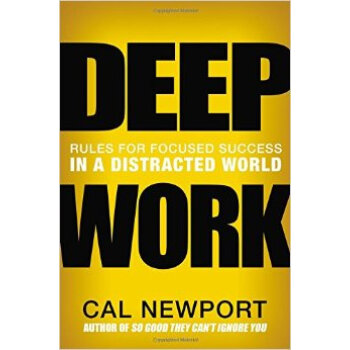
![Swim Speed Strokes for Swimmers and Triathletes: [平装] pdf epub mobi 电子书 下载](https://pic.windowsfront.com/19639787/578342c4N35b9d495.jpg)



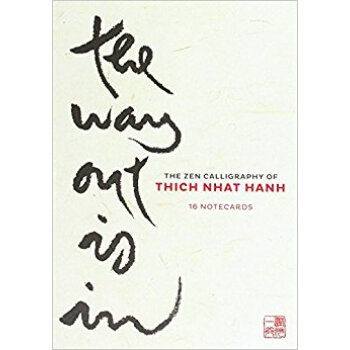
![The Very Noisy Bear (Book+Audio CD Set) 好吵的熊(书+CD) [3-8岁] pdf epub mobi 电子书 下载](https://pic.windowsfront.com/19784368/58c8ee84Nd6734fa6.jpg)

![Batman: The Rebirth Deluxe Edition Book 1 (Rebirth) [精装] pdf epub mobi 电子书 下载](https://pic.windowsfront.com/19854415/59001469N8fb5c9a1.jpg)

